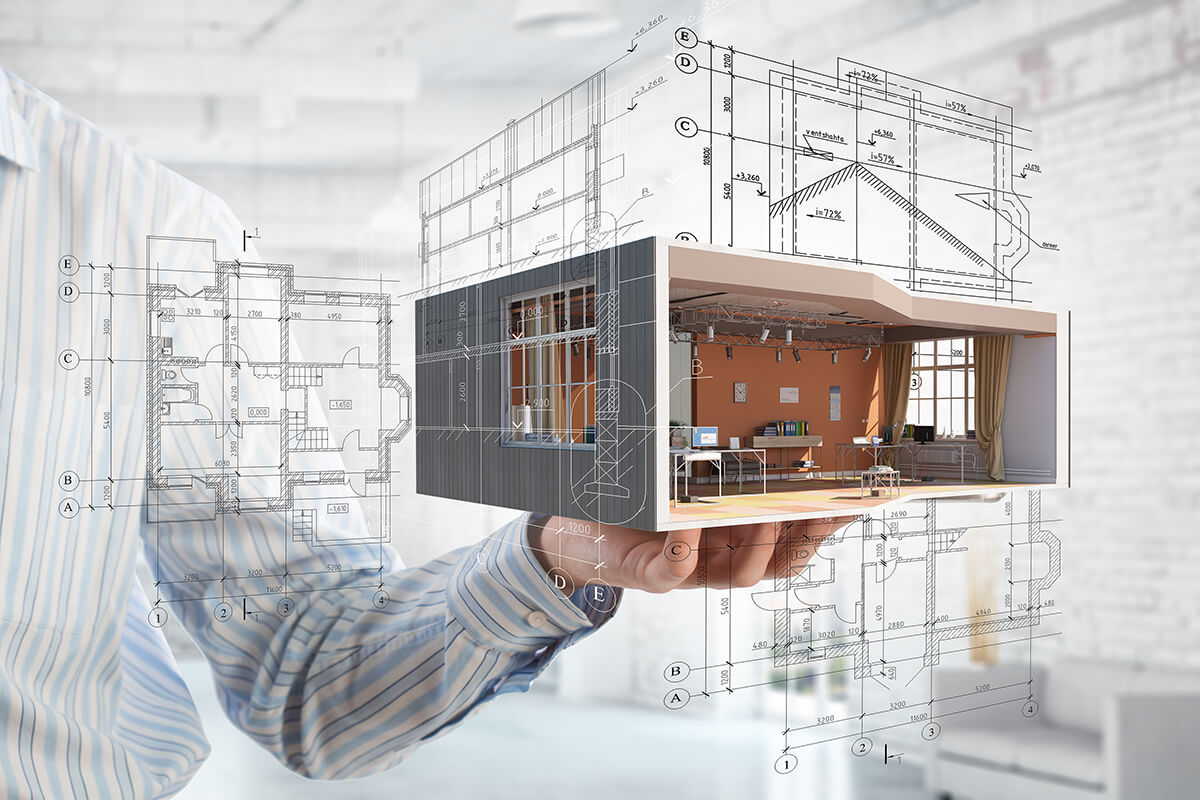Architect Advice on Optimizing Compact Urban Spaces
Architect Advice on Optimizing Compact Urban Spaces
Blog Article
Recognizing the Diverse Occupation Paths Available for Aspiring Architect
As a hopeful Architect, you have a globe of profession paths waiting for you. Whether you're attracted to traditional architecture or the nuances of lasting design, there's a niche that aligns with your interests.
Typical Style: Creating Buildings and Structures
Standard design focuses on creating structures and frameworks that mix capability with visual charm. Your styles can reflect cultural heritage, showcasing neighborhood practices while meeting contemporary needs.
You'll develop skills in drafting, model-making, and site evaluation, allowing you to envision and interact your ideas properly. Involving with customers, you'll need to understand their vision and equate it right into feasible layouts.
In addition, developing codes and sustainability practices are vital in your work, guaranteeing your frameworks are eco pleasant and risk-free. As you expand in your profession, you'll locate opportunities in property, commercial, or even repair jobs, each offering one-of-a-kind difficulties. Embracing typical architecture leads the method for a fulfilling occupation that pays tribute to the past while shaping the future.
Urban Preparation: Shaping Neighborhoods and Public Spaces
As an ambitious Architect, you can play an essential function as an urban planner, transforming exactly how communities connect and function. By employing area interaction techniques, you'll ensure that locals have a voice fit their setting. Plus, integrating sustainable design principles will assist create areas that not just satisfy today's demands but additionally secure the future.
Function of Urban Planners
While several may think about designers as the single enthusiasts behind buildings, metropolitan planners play a crucial role fit the wider landscape of areas and public spaces. They assess land usage, zoning legislations, and neighborhood requires to create sustainable atmospheres that improve high quality of life. By collaborating with various stakeholders, you'll help create parks, transportation systems, and suburbs that advertise social interaction and accessibility. Urban planners also concentrate on environmental factors to consider, ensuring that advancements incorporate eco-friendly spaces and assistance biodiversity. Your experience in spatial layout and community characteristics permits you to imagine future growth while protecting cultural heritage. In this crucial duty, you'll straight affect how individuals experience their environments, making every task a possibility for positive adjustment.
Neighborhood Interaction Strategies
Efficient community interaction approaches are vital for city planners to guarantee that the voices of citizens are heard and valued in the planning process. To cultivate meaningful discussion, you should focus on open forums and workshops where neighborhood members can express their ideas and problems. By actively incorporating and paying attention responses, you'll produce rooms that show the neighborhood's needs, inevitably leading to more successful and sustainable urban settings.
Sustainable Design Principles
When creating urban areas, integrating sustainable style concepts is critical for creating atmospheres that prosper both environmentally and socially. Consider integrating green rooms, like gardens and parks, to improve biodiversity and improve air top quality.
Designing with water preservation in mind is likewise vital-- think of rainfall yards and permeable surface areas to handle stormwater. Including neighborhood members during the preparation process assurances that the rooms you develop fulfill their needs and urge social interaction. By welcoming these principles, you'll contribute to vibrant, lasting metropolitan landscapes that profit every person.

Landscape Architecture: Developing Sustainable Outside Environments
As you explore landscape design, you'll find vital style principles that create practical and stunning outside spaces. Sustainable methods play an essential role in making sure these settings grow while minimizing environmental effect. Plus, you'll discover a selection of profession chances that enable you to make a genuine distinction in how individuals connect with nature.
Style Principles in Landscape
Understanding layout principles in landscape design is vital for creating sustainable exterior environments that integrate with nature. You'll need to contemplate aspects like proportion, equilibrium, and range to guarantee your styles feel natural and inviting. Integrating indigenous plants not only boosts biodiversity yet likewise minimizes water usage, making your landscape resilient. Consider the circulation of room and exactly how individuals engage with it; paths and seating areas ought to welcome expedition and relaxation. Furthermore, focus on seasonal modifications, making with materials that complement the environments year-round (Architect). By prioritizing sustainability and appearances, you can create exterior spaces that enrich the neighborhood and advertise well-being. Accepting these concepts will certainly set a strong foundation for your career in landscape style.
Lasting Practices Overview
Sustainable techniques in landscape style not only focus on visual appeals but also focus on eco-friendly health and resource conservation. You can develop areas that advertise dirt health, such as making use of organic products and practicing permaculture concepts. Eventually, these methods ensure your designs profit both individuals and the environment for years to come.
Job Opportunities Expedition
With a strong foundation in lasting practices, landscape architecture uses a variety of job courses that enable you to make a meaningful influence on the atmosphere. You could function as a landscape designer, developing visually pleasing and practical outside rooms, or focus on environmental remediation, aiding to restore damaged environments. Urban organizers frequently team up with landscape architects to produce green areas in metropolitan settings, improving city livability. If you're enthusiastic concerning education, think about ending up being a landscape design educator, motivating future generations. In addition, you could work with nonprofits concentrated on environmental sustainability or involve in study to introduce new techniques. Each path not just shapes beautiful settings however additionally fosters a much healthier earth for future generations.
Sustainable Design: Concentrating on Eco-Friendly Practices
As you explore your career in architecture, accepting eco-friendly methods can establish you apart in an affordable area. Lasting style concentrates on developing structures that decrease environmental effect while boosting owner well-being. By incorporating renewable products, energy-efficient systems, and sustainable structure methods, you'll add to a greener future.
Begin by obtaining expertise of green certifications like LEED learn this here now or BREEAM, which can boost your qualifications. Take into consideration exactly how natural light, ventilation, and thermal efficiency can maximize design. Team up with engineers and environmental professionals to innovate services that decrease waste and preserve sources.
Do not forget the relevance of community involvement-- interesting neighborhood stakeholders can influence layouts that integrate with the environment. As clients significantly focus on sustainability, your experience in environmentally friendly techniques will not just bring in jobs however also fulfill your interest for responsible architecture. Embrace this vital element of the occupation, and enjoy your career thrive.
Historical Preservation: Protecting and Restoring Social Heritage
While you start on your building journey, take into consideration the necessary role of historic conservation in keeping our cultural heritage. This field concentrates on the defense and restoration of substantial buildings, websites, and structures that inform the stories of our past. By involving in historic preservation, you'll aid guard the building legacy that forms area identification.
As a historic preservation Architect, you'll examine historic importance and assess the problem of frameworks. You'll function carefully with historians and preservationists to ensure genuine repair methods are employed. This occupation path enables you to blend imagination with research study, allowing you to design remedies that value initial materials and craftsmanship.
Your job not just contributes to sustainability by recycling existing buildings yet additionally promotes a sense of pride within areas. Welcoming this course will help you end up being a guardian of history, preserving the stories and aesthetics that improve our lives.
Inside Style: Enhancing Indoor Spaces
Historic conservation and indoor style both share a dedication to enhancing the constructed setting, yet they concentrate on different facets. While historical conservation emphasizes maintaining a framework's cultural and historic worth, indoor style absolutely nos in on optimizing indoor areas for functionality and aesthetics.
As an ambitious Architect, you'll locate that interior architecture enables you to mix creative thinking with technical abilities. You'll make rooms that not just look great yet also promote comfort and performance. This area includes understanding exactly how light, shade, and find more materials connect within a room, impacting state of mind and use.
You'll service different tasks, from household homes to industrial workplaces, making sure that each setting fulfills the requirements of its owners. By prioritizing user experience, you can transform interiors into functional and motivating areas, making a considerable effect on how individuals communicate with their surroundings. Embrace the chance to enhance interior atmospheres and form the method individuals live and function.
Industrial Style: Merging Capability With Aesthetics
Commercial design plays an essential function in creating products that perfectly mix aesthetic appeals with performance, ensuring that what you use everyday is not only aesthetically enticing however additionally useful. As an aspiring Architect, you can involve yourself in this field, concentrating on designing everything from furnishings to consumer electronic devices. Your job entails recognizing customer requirements, products, and manufacturing procedures, allowing you to develop cutting-edge solutions that boost everyday experiences.
In industrial design, you'll usually team up with makers, marketing experts, and designers, ensuring that your styles are not just stunning but also practical. This job course offers a vibrant atmosphere where creative thinking satisfies functionality, making it a gratifying choice for designers interested in shaping the items of tomorrow.
Regularly Asked Concerns
What Educational Certifications Do I Required to End Up Being an Architect?
To come to be an architect, you'll need an expert degree in design, typically a Bachelor's or Master's. Furthermore, you'll need to finish a teaching fellowship and pass additional info the Architect Registration Exam to practice legally.
Are There Qualification Requirements for Different Building Occupation Paths?
Yes, there're certification demands for numerous building paths. Architect. You'll require to pass tests, full teaching fellowships, and sometimes seek specialized training, relying on your chosen emphasis, like landscape style, urban layout, or historic conservation
What Software Application Abilities Are Essential for Designers Today?

Just How Can I Gain Practical Experience While Examining Style?
You can gain useful experience by interning at building firms, taking part in design competitions, offering for area jobs, or collaborating with classmates on real-world projects. These opportunities boost your skills and build valuable links in the market.
What Work Opportunities Exist Outdoors Typical Design Firms?
You can check out different task opportunities outside traditional design firms, like metropolitan preparation, indoor style, landscape architecture, building and construction management, property development, or even duties in sustainability consulting. Each deals distinct challenges and benefits.
Whether you're attracted to typical design or the nuances of sustainable style, there's a particular niche that lines up with your passions.When creating urban spaces, including sustainable style concepts is important for producing environments that prosper both environmentally and socially.As you explore landscape architecture, you'll find essential design principles that develop functional and beautiful exterior areas.Comprehending layout concepts in landscape design is essential for creating sustainable outside settings that integrate with nature.In industrial layout, you'll usually team up with makers, engineers, and marketing experts, making sure that your styles are not just beautiful but likewise practical.
Report this page